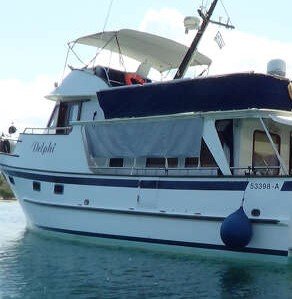mold requires temps over 70 degrees and Relative humidity over 50%.
I've learned a few things about this in my 40 year HVAC career.
Seal the boat up tight when you are gone, no ventilation, turn off solar fans etc., this sounds wrong but follow along.
Also some form of dehumidifier, the small peltier type work well for this application. you might need two for a big boat, they use very little electricity.
If you keep the boat tight and run a dehumidifier the humidity stays low and no mold. If you have ventilation to out side you just keep replacing the humidity with more from outside.
Don't worry about the heat. the higher the temperature the lower the relative humidity and that's the main thing, keep the humidity low.
The final tip I have is open your bilge/engine hatches, and install some sort of dry bilge system or equipment, these can be built for less than a hundred dollars.
Ive been keeping boats and houses in Florida and Georgia mold free this way for years.
The portable A/c that that has 1 hose to blow hot air outside just keeps pulling humid air back into the boat, like digging a hole and throwing the dirt back into the hole.
Main thing is dry it out and keep it dry, keep the humid outside air outside and dry out he inside air. if your boat is tight it doesn't take much to keep it dry.





 ?? Not useful, this Forum?
?? Not useful, this Forum?